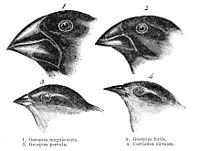
Northern European Salmo trutta (L.) populations are genetically divergent across geographical regions and environmental gradients
Sign Up to like & getrecommendations! Published in 2020 at "Evolutionary Applications"
DOI: 10.1111/eva.12877
Abstract: The salmonid fish Brown trout is iconic as a model for the application of conservation genetics to understand and manage local interspecific variation. However, there is still scant information about relationships between local and large‐scale… read more here.
Keywords: gea; population structure; geographical regions; across geographical ... See more keywords

Abstract CT156: MCLA-158 (petosemtamab), an IgG1 bispecific antibody targeting EGFR and LGR5, in advanced gastric/esophageal adenocarcinoma (GEA)
Sign Up to like & getrecommendations! Published in 2023 at "Cancer Research"
DOI: 10.1158/1538-7445.am2023-ct156
Abstract: The epidermal growth factor receptor (EGFR) is a known driver of cancer growth and the leucine-rich, repeat-containing, G-protein coupled receptor 5 (LGR5) is a transmembrane receptor expressed on cancer stem cells. Petosemtamab is a human,… read more here.
Keywords: lgr5; igg1 bispecific; petosemtamab; bispecific antibody ... See more keywords

Molecular biomarkers in gastro-esophageal cancer: recent developments, current trends and future directions
Sign Up to like & getrecommendations! Published in 2018 at "Cancer Cell International"
DOI: 10.1186/s12935-018-0594-z
Abstract: Gastro-esophageal adenocarcinomas (GEA) represent a severe global health burden and despite improvements in the multimodality treatment of these malignancies the prognosis of patients remains poor. HER2 overexpression/amplification has been the first predictive biomarker approved in… read more here.
Keywords: gea; biomarker; treatment; gastro esophageal ... See more keywords

Commentary: Evaluation of Phase-Amplitude Coupling in Resting State Magnetoencephalographic Signals: Effect of Surrogates and Evaluation Approach
Sign Up to like & getrecommendations! Published in 2018 at "Frontiers in Computational Neuroscience"
DOI: 10.3389/fncom.2018.00026
Abstract: Using Human Connectome Project (HCP) data, Gohel et al. (2016) (GEA) recently reported that “resting-state MEG signals failed to exhibit ubiquitous phase-amplitude coupling (PAC) phenomenon, contrary to what has been suggested” by Florin and Baillet… read more here.
Keywords: phase amplitude; gea; evaluation; resting state ... See more keywords

Cytopathologic features of human papillomavirus–independent, gastric-type endocervical adenocarcinoma
Sign Up to like & getrecommendations! Published in 2022 at "Journal of Pathology and Translational Medicine"
DOI: 10.4132/jptm.2022.07.05
Abstract: Background Gastric-type endocervical adenocarcinoma (GEA) is unrelated to human papillomavirus (HPV) infection and is clinically aggressive compared with HPV-associated usual-type endocervical adenocarcinoma (UEA). The cytological diagnosis falls short of a definitive diagnosis of GEA and… read more here.
Keywords: endocervical adenocarcinoma; gea; gastric type; type endocervical ... See more keywords